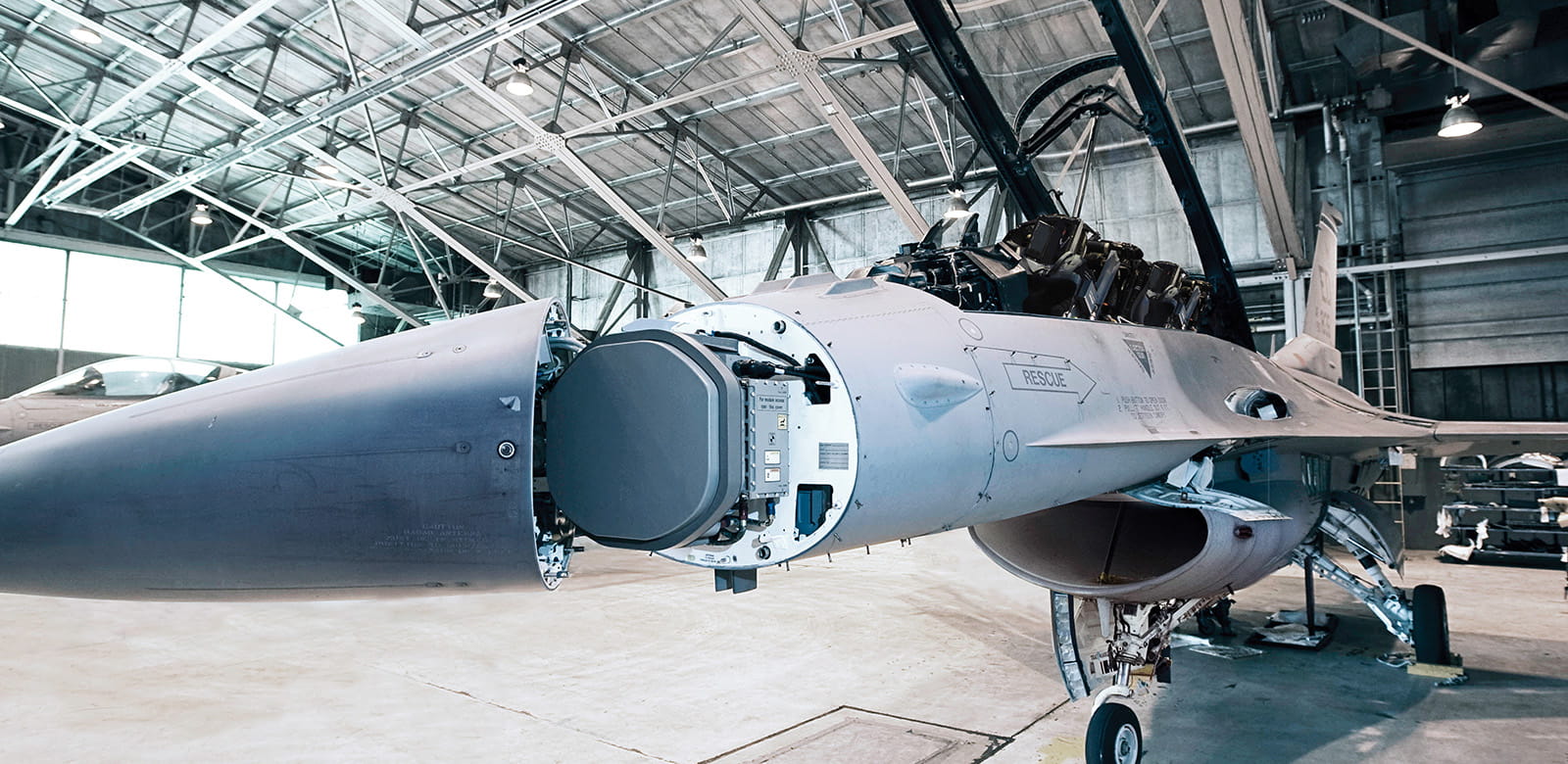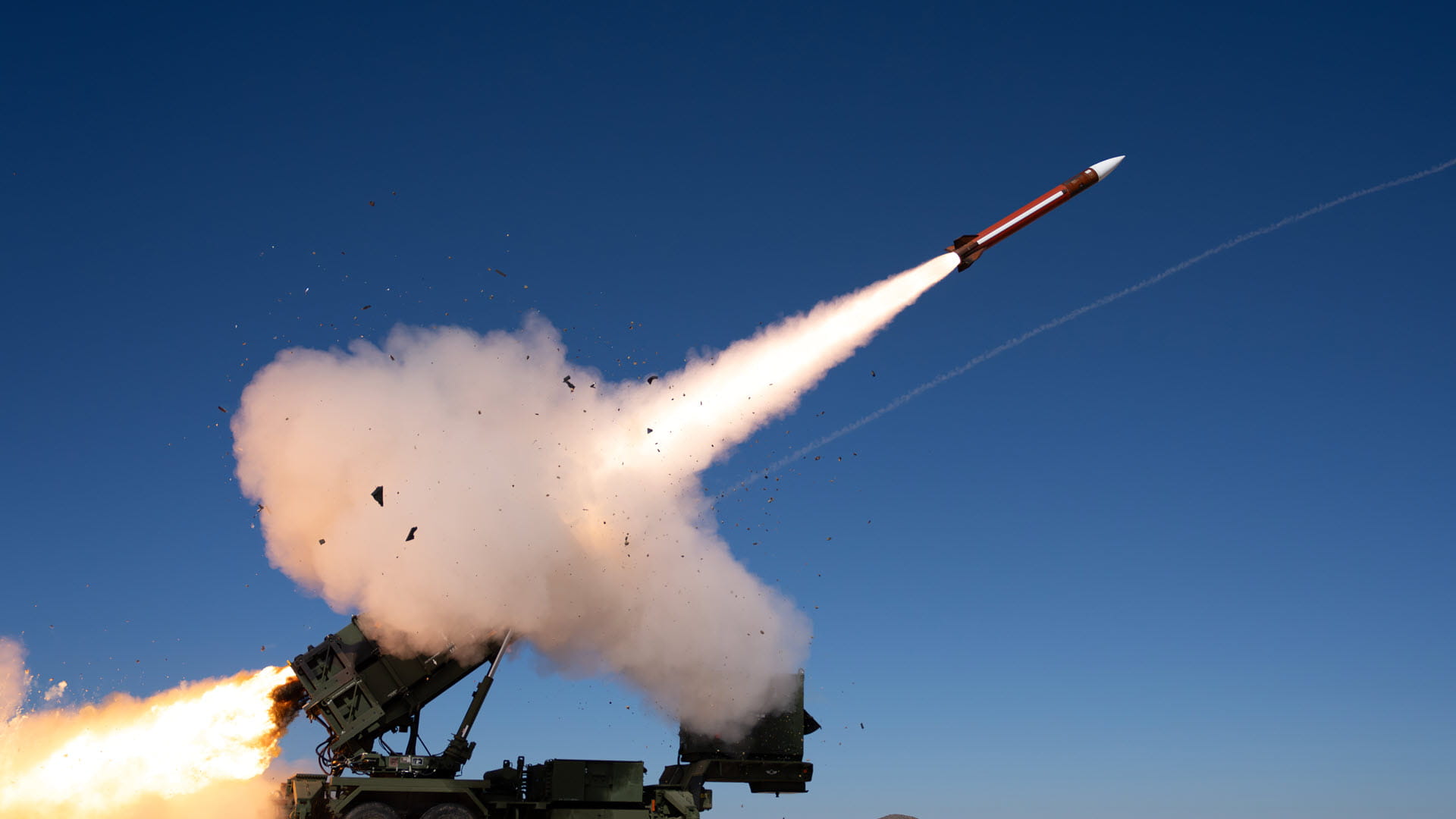Bridging the generation gap
Arming the F-35, modernizing 4th-gen fighters for air dominance
Jim "Meegs" Meger was in the cockpit of an A-10 Warthog, closing in on Pristina, Kosovo, when a burst of high-pitched noise hit his ear.
It was a tone from his plane's ALR-69 Radar Warning Receiver. The Serbs' surface-to-air missiles were pointed his way. As he began defensive maneuvers, the alarm sounded again. The enemy had fired.
Lucky for Meger, a pair of F-16 fighter jets armed with HARM® missiles engaged the missile site to keep the radar down. He and his wingman doubled back and led an offensive strike on the site.
That was back in 1999, but the planes Meger and his squadron mates were flying are still in the air today – even as advanced fifth-generation fighters like the F-35 take to the skies. To keep older aircraft apace with the newer generation, Raytheon Technologies is outfitting them with some of the same cutting-edge technology, all to give the U.S. and its allies the overwhelming advantage called "air dominance."
“Every time that we go into battle, I want to win 100 to zero,” said Meger, a former fighter pilot and commander for the U.S. Air Force and now a business development manager at Raytheon Missiles & Defense, a business of Raytheon Technologies. “I am not interested in a 51-to-49 game. And neither is this country.”
Fighter aircraft with Raytheon Technologies systems include the F-35, F-22 Raptor, F/A-18 Super Hornet, F-16 Fighting Falcon, EA-18G Growler, F-15 Strike Eagle, JAS-39 Gripen and Eurofighter Typhoon.

Jim "Meegs" Meger taxis back from a sortie in an A-10 Warthog. Meger, a former U.S. Air Force fighter pilot who now works for Raytheon Technologies, credits the ALR-69 Radar Warning Receiver with saving his life during a 1999 mission over Pristina, Kosovo.
Advancements all around
The F-35 is the world's most advanced fighter jet. And as Raytheon Technologies equips it with high-tech weapons, the company is doing the same for older fighters as well.
Those precision weapons include:
- The StormBreaker smart weapon, a winged munition that glides more than 40 miles and can autonomously detect and classify moving targets in any weather conditions. Raytheon Technologies and the U.S. Air Force have completed rigorous wind-tunnel tests on the StormBreaker smart weapon, which is also slated for the F-15E, F/A-18 E/F Super Hornet and all variants of the F-35.
- AIM-120D AMRAAM missile, the newest air-to-air weapon in the U.S. arsenal. The updated variant has increased range, GPS-aided navigation and a two-way data link.
- AIM-9XSIDEWINDER missile, the first short-range air-to-air missile to be used on the F-35. The U.S. Air Force, U.S. Navy and Raytheon Technologies successfully test-fired an AIM-9X Block I missile at an airborne target from the F-35A.
With newer weapons, older planes can contribute in a more meaningful manner to their missions.
"Their ability to be equally upgraded and modified to carry AIM-120Ds or AIM-9X Block IIs exponentially increases the amount of battlespace that they can effectively control because the weapons that they carry are so much superior than their predecessors," said Dan "Dagwood" Darnell, a former U.S. Air Force F-16 pilot who now works at Raytheon Intelligence & Space, a business of Raytheon Technologies.
The newer variants "are a quantum leap in technology over anything we had when I was flying," Darnell said.
New radar, new plane
It's not enough to give older planes the best and newest weapons. They also need radars – and that's another way Raytheon Technologies is bringing new life to U.S. and allied fourth-generation fighters.
The company has integrated its active electronically scanned array, or AESA, tactical radars onto the F/A-18, F-15 and F-16. Where older radars could look in only one place at a time, the newer radar can see in multiple directions at once.
“You legitimately have the capability to target multiple adversaries simultaneously that you never had in a mechanical-scan antenna,” said the former Raytheon Company's Neil “Stub” Kacena, a former fighter pilot who led development of AESAs when he was in the Air Force.
The U.S. Navy’s F/A-18 fleet is getting a boost in capability with the APG-79 AESA radar system. Dubbed the “sensor backbone” of the fleet, it gives pilots better awareness of their surroundings by steering the radar beam at nearly the speed of light.
While radars use energy to help pilots scan the battle space, radar warning receivers detect energy and use it to warn pilots of possible attacks. The ALR-69A Radar Warning Receiver, for example, is the world's first all-digital radar warning receiver. Raytheon Technologies is bringing it to the F-16 and the C-130 Hercules transport plane, among other platforms.
Its earlier version is the reason Meger is still alive.
“My RWR saved my life,” Meger said. “This was back in 1999, and the software and processors have only gotten better — more capable, more accurate. It’s a huge capability that ensures the survivability of our aircrew.”
Raytheon Technologies provides an entire spectrum of products that give today’s pilots next-generation capabilities to find, track and acquire targets, and dominate tomorrow’s battlespace.









